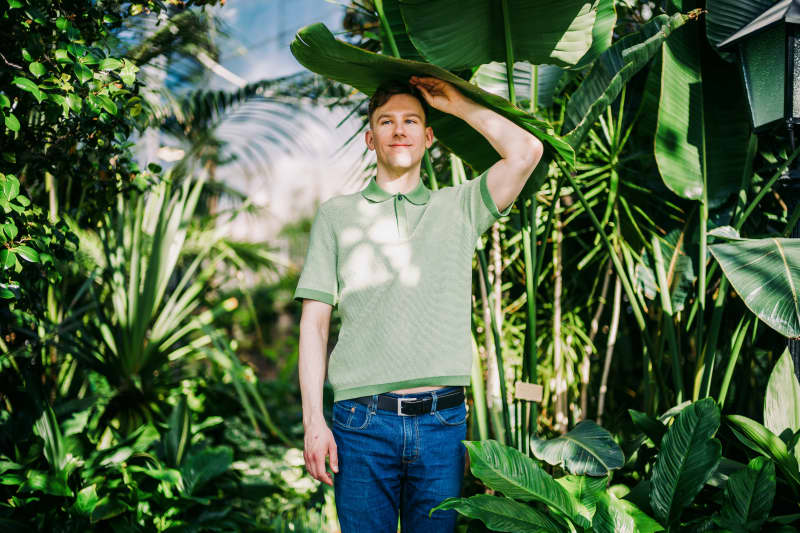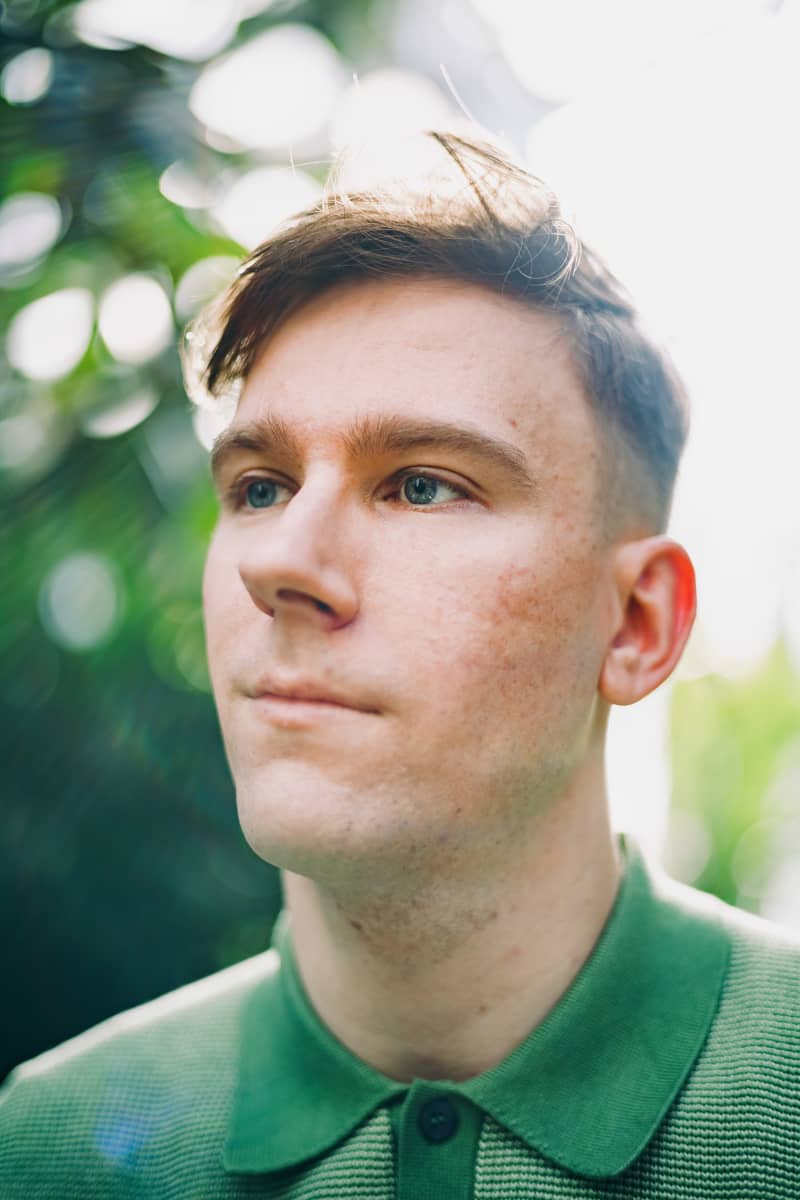
How to become what is? Cultural guest Anssi Niemen’s road to becoming an actor has passed through bullying hell, sadness and losses. In his provocative performance, he describes internalized homophobia.
– From a very young age, you understand what you are communicating and how others interpret it. In order to be accepted and avoid nasty comments, you try to read how it should be, says Niemi.
Niemi deals with the homophobia of our time in his one-man show called *Straight Acting*. The term refers to a homosexual man whose nature and behavior correspond to the stereotype of a traditional straight man.
But don’t go to that yet. First, let’s go to where it all started.
Anssi Niemi grew up with her twin brother and single mother in a loving home in Laajasalo, Helsinki. He spent the summers in Orimattila. There he adventured with his brother in the forest and entertained the cabin neighbors by organizing solo performances.
They played wedding in the kindergarten. The Anssi boy was allowed to be the groom. It was acceptable. However, you were not allowed to participate too much in the girls’ games.
– The kindergarten teachers pointed out that we should play with the boys, that this gentleman now has too much fun with the girls. In small pieces, you can understand what is good and what is not, says Niemi.
The Spaissari shirt was a mistake
When Niemi started elementary school, the British pop group Spice Girls was a big deal. Niemi thought \”Spaissarit\” was enchanting.
The mother bought her son one shirt with her little money. In Nieme’s opinion, it was the most beautiful piece of clothing he had ever seen. He went to school in a Spaissari shirt. It was a mistake.
– I didn’t realize that putting it on would be in any way strange, but it was pointed out immediately, says Niemi.
Children thought that a Spaissari shirt on a boy was a sign of homosexuality. The same category included an ear ring in the left ear and a \”rat whip\ i.e. a narrow, straight back hair. That was the case for many in the 1990s, including Anssi Nieme.
Jaakko called trans
When Niemi moved to middle school, the memory of the Spice Girls shirt was dug up from mothballs. It led to systematic bullying.
– It seemed completely unreasonable. It was agonizing and daily. It continued throughout middle school.
– When I walked by, Jaakko would yell from somewhere around the corner or leaning against the wall that \”tranny\”. It was strange.
Everything was seized. It was enough to exist. When Niemi moved to middle school, almost all of his former classmates were placed in a different class. So he had no friends. That was also a reason to tease.

Niemi was lonely and escaped to his fantasy world. He spent the evenings watching TV series, reading teenage literature and writing short stories.
– I have always had faith in the future. I can imagine things going forward and I thought then that this reality is not the reality of the rest of my life.
It was his way of coping – and it turned out to be the right one.
Acting was about being seen
When Niemi started Kallio’s expressive arts high school, the bullying stopped like a wall. He got friends and room to breathe. At the same time, he found what he wants to do.
– I remember how it felt to get energy from the audience. It was an experience of becoming visible, such that one’s own presence and presence are something positive and desirable.
In his senior year, Niemi decided that he would become an actor. The doors to the Theater School of the University of the Arts did not open immediately. He got in on the eighth try.
How gay do I look?
And now here we are. Niemi has written a *Straight Acting* monologue for himself. It premiered at Helsinki’s Teatteri Viirus in March. Every show sold out in no time.
In his monologue, Niemi goes through the internalized homophobia of our time, the one that everyone carries with them, no matter how hard they try to be free of old norms and attitudes.

The show starts with Nieme’s question to the audience: \”How gay do I look?\” The question is embarrassing because it puts a mirror in front of the audience, from which they can see their own attitudes: what does a homosexual look like, what does a straight person look like. Just like in my own opinion.
– It’s an absurd question and in relation to everyone’s ideas about homosexuality. It has to do with stereotypes and images. Even though all of us carry them, it feels shameful to recognize them.
\”We don’t live in an ideal world\”
Role-playing is also related to the same attitudes and also affects what kind of roles are written. Are they central, do they have substance, or do they just fill some minority quota? Mental images also affect who is offered roles: gay or straight actors.
– There is such a contradiction that we do not live in any utopia or ideal world yet to any extent, says Niemi.
Niemi deals with the subject through a kind of horror picture or dystopia, imagining what the \”gay hell\” of his field could be. In terms of roles, it could be one where gayness is somehow added as a spice, without anything else to say or act.
– We expect that the actor would be able to bring a depth to the role that does not exist in the blink of an eye.
When Niemi graduated as a bachelor, he started getting job offers. A large part of them were just one shooting day’s visits in roles, the content of which was not particularly significant.

– Sometimes I wonder if I am being asked because of my own personal identity or because they think I would be good at my profession.
Niemi emphasizes that many have good intentions, and the roles are not necessarily stereotypical or offensive, they just lack substance.
– Of course, there have also been great queer-themed things that I’ve been involved in. Such was, for example, the Helsinki City Theater’s *Bolla*. It was significant for me, even though I joined in the middle of the show’s season.
Death draws meaning to life
Niemi thinks that through death, what is significant and loving in life is drawn out more clearly. He knows what he is talking about: death has followed him throughout his life.
When Niemi studied at Teatterikoulu for the first year, his mother died. In the midst of joy and rejoicing came a great shock.

During the emergency visit, it was found out that the mother had an aggressive cancer. In five weeks it was all over.
– There was hope in the beginning. In the emergency room, it was found out that the tumor is in the brain, but when the first treatment appointment was only given a couple of weeks later, I didn’t realize how fast things were happening.
Nieme’s mother was transferred from hospital to home and from home to hospital, until she was finally taken to Suursuo Hospital for palliative care.
Niemi went to school during the day and took care of her mother in the evenings together with her brother.
– My brother and I were present the whole time. We supported each other.
Suffering does not brighten
After the death of the mother, Nieme and his twin brother became orphans. Their father had died when they were five years old.
Nieme only has vague images of her father: a man meeting her and a brother on the edge of a sandbox. A coffin in an Orthodox cemetery. A real boy throwing sand on a coffin.
– I didn’t have a relationship with my father, and I didn’t need him in my life. Mom was able to offer us so much that we never felt like where is dad.
Mother had always been the one who encourages and sits watching all of Nieme’s roles.

Although the actor has experienced a lot of adversity, loss and sadness, he doesn’t think that they will polish the artist into a diamond. Suffering does not brighten.
However, one thing has led to another. The bullying caused Niemen to escape into his inner world of imagination and fiction in middle school. That, in turn, led him to become interested in writing and took him to expressive arts high school, where Niemi discovered acting.
– When social circles changed and things became easier, I gained perspective. Middle school experiences do not define me or how I view the world.
Another funeral
A moment ago, Niemi realized that six years have passed since her mother’s death, and she no longer thinks about it constantly. So much life and things have fit into the years. Happy and great things.
– Of course, loved ones are always present on some level. Consciously or unconsciously, a flash or memory comes and you think about what the mother would do or say in this situation or how she would be present.
Memento mori. Remember your mortality. That, and the vanitas themes that remind us of the brevity of life, have been important in the visual arts. Death and mortality are essentially connected to Anssi Nieme’s medium, theatre.
– The metaphor of life and death is strongly present in the theater. The show starts and lights up. It’s alive for a while and then it’s gone. The show moves to memories and thoughts. Then it’s forgotten. And it’s not terribly significant in the end games.
Niemi played the last performance of *Straight Acting* at the beginning of April. And as is customary in the theater, the funeral of the performance was held afterwards.
*What kind of thoughts did the story evoke? You can participate in the discussion until April 10 at 11 p.m.*

